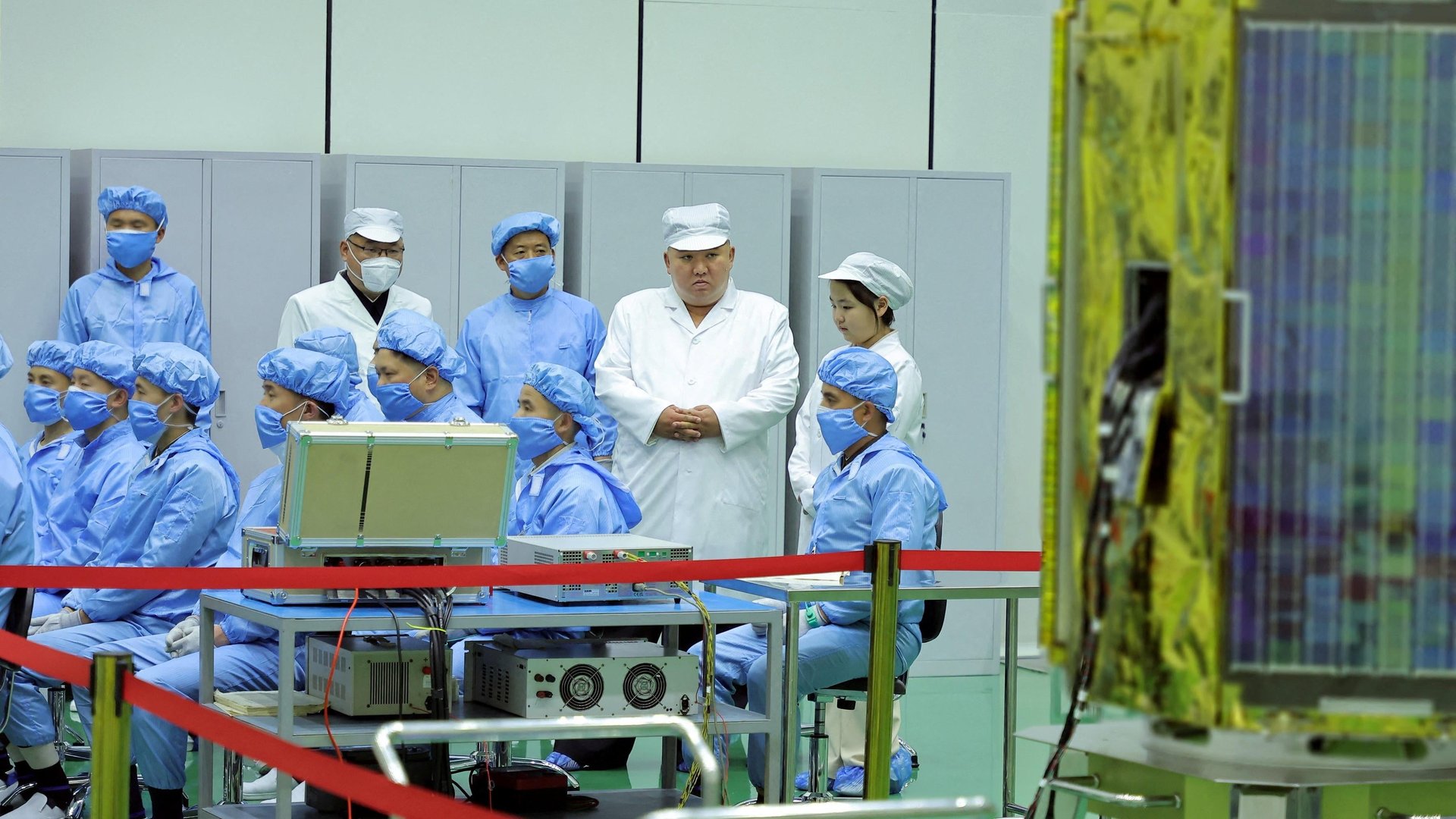North Korea can build rockets. Can it build a satellite?
Kim Jong-Un wants to launch his country's first functioning spacecraft

North Korea says it will attempt to launch a spy satellite sometime before June 11, after warning nearby Japan about potential rocket debris.
Suggested Reading
The planned space mission drew condemnation from Japan and South Korea, who argue along with the US that North Korea’s space launches are a thinly disguised part of North Korean leader Kim Jong-Un’s efforts to develop nuclear missiles.
Related Content
Similar claims are made about Iran’s space program, but in the case of North Korea, the country is openly testing weapons systems on a separate track. Notably, in April it test-fired a mobile, solid-fueled ballistic missile, two capabilities that make it easy to hide and store over long timespans. The US mainland has been threatened by North Korea’s nuclear arsenal since 2017.
But the record of the country’s 10-year-old space agency is largely one of failure; its most recent launch, in 2016, saw a spacecraft reach orbit, but its operators apparently lost control of the satellite.
“I continue to be very underwhelmed by what they can put in space,” Brian Weeden, a space security expert at the Secure World Foundation, told Quartz. “North Korea appears to have the rocket part figured out, but all of their satellites to date have either been dead on arrival or stopped functioning shortly thereafter.”
North Korea’s rockets are based on Chinese and Russian designs
Designing a rocket vehicle that can deliver a missile or reach orbit is a comparatively straightforward process, particularly if countries like China and Russia can help North Korea evade sanctions designed to prevent it from accessing rocket parts.
“Some of the things that North Korea is trying to do...things like ICBMs and [missiles with several warheads]—you’re talking about technology that’s over 50 years old,” Markus Garlauskas, a former US intelligence official who now teaches at Georgetown University, said last year. “These are things that the Soviets were doing in the ’60s and in the ’70s successfully. And so materials science and off-the-shelf technology—commercially available technology—has advanced so much that things that required sort of cutting-edge research back then are things that are commonly available today if you can get access to the world market.”
That helps explain how the officially isolated country has been able to develop an array of missiles that can attack not just its neighbor South Korea but also the US across the Pacific Ocean.
Satellites are a trickier engineering problem
Flying a useful satellite isn’t easy. Off-the-shelf components help (even college students can build a functioning cubesat), but delivering useful data requires precision-manufactured chips, delicate optics, and optimized software. Even China, with its advanced domestic electronics industry, attempts to steal tech like radiation-hardened chips and ultra-precise gyroscopes from the US.
Satellites also require environmental testing that rockets don’t undergo to ensure its delicate components can survive the extreme environment of launch, with its g-forces, vibrations and noise; the large swings in temperature they face in orbit; and the radiation outside of Earth’s atmosphere. North Korea is currently constructing what appears to be a facility for these kind of tests.
This launch is expected deliver a military reconnaissance satellite to orbit, with a specific goal of watching over the regular military exercises conducted by the US and South Korea. If North Korea is able to place the satellite in orbit, that’s one thing—but if it can show that it’s capturing data and transmitting it back to Pyongyang, it will be a major step forward for Kim Jong-Un’s regime.
While satellite technology isn’t required to fire long-distance missiles, space-based communications, navigation, and sensors can help them spot a target and reach it more accurately.
